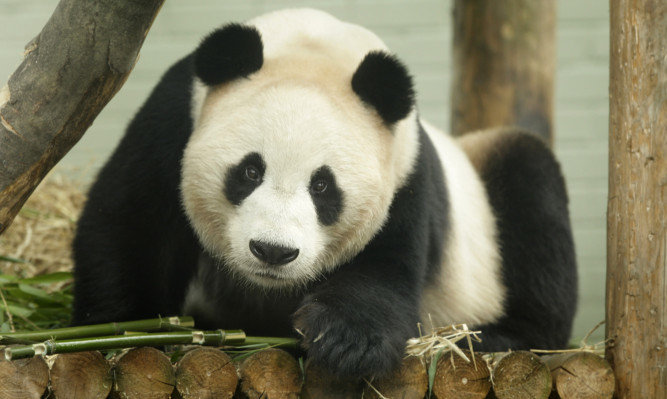Edinburgh Zoo is 100 years old this year and its history will be celebrated in an exhibition opening to the public on Wednesday.
The gates of the zoo first opened to the public on July 22, 1913, four years after the Zoological Society was established by Edinburgh lawyer Thomas Gillespie.
During his time as the zoo’s first director he welcomed Scotland’s first giraffe, provided a home for Wojtek the brown bear who carried ammunition for Polish troops during the Second World War and also introduced penguins in 1914 which have proved popular with visitors for 99 years.
For almost 60 years Tom Wood, 63, has been visiting the zoo and as a policeman in the 1970s he attended a number of zoo-related incidents, including the retrieval of escapee wallabies from neighbouring gardens.
On one occasion Mr Wood was called to a house in the city where a lion had been spotted. It belonged to an exotic dancer who used to perform with the animal in bars.
“We got into the house and right enough here is a half grown lioness in the back garden being fed on dozens of tins of cat food and huge pans of milk by its owner who was a go-go dancer,” he said.
“The go-go dancer and the lion had both, quite some time ago, lost their youthful appearance, shall we say. The lion had outgrown the act, it had been used as a cub and the poor thing had rickets because it hadn’t been properly fed,” said Mr Wood. He explained that the lioness later became a resident of the zoo.
Initially, the zoo gave people the opportunity to see wild animals in the flesh but over the years the zoo has had to evolve a wider remit in response to a changing world, according to Chris West, CEO of the Royal Zoological Society of Scotland.
He explained that the main focus now of the RZSS and the zoo is conservation as a result of wild spaces and the populations of wild animals shrinking.
“The world we live in is warming, it’s crowded, it’s damaged. The projections are that we’ll lose a third, a half of biodiversity of all living creatures by the middle of the century so humanity is damaging its spaceship.
“So it’s vitally important that organisations like zoos remind people of the wonder of and the fragility of nature but also how dependent we are on it being a healthy planet with a healthy nature,” said Mr West.
“There is a very important role for zoos to act as sort of lifeboats, as the Titanic hits the iceberg, but also because we have an enormous audience so people who otherwise wouldn’t connect with nature can do it through a zoo.”
As humanity becomes increasingly urbanised there is less direct contact between people and wild animals and plants so the role of the zoo to bridge that gap is more important, says Mr West. “It’s not television or YouTube or the internet – it’s real,” he said.
It is this experience and appreciation of the natural world that is central to what Edinburgh Zoo aims to encourage in visitors with Mr West harbouring aspirations to inspire the next David Attenborough.
Edinburgh Zoo is “premier league” according to Mr West. He describes its use of science to collaborate internationally as “progressive”, for example molecular geneticists are currently assisting the Thai government to trace illegal rhino horn and ivory as part of the fight against poaching.
“We also have a voice, we have 23,000 members and a huge number of visitors every year so if we want to use our voice to say that something like the ivory trade is not a good thing and should be stopped because of the poaching of elephants and extinction eventually then we should use that voice of course.”
The zoo has programmed a series of events to celebrate the 100th anniversary including the The Edinburgh Zoo Centenary Exhibition at the Central Library in Edinburgh from April 3 to May 31. Admission is free and more details can be found online www.edinburghzoo.org.uk.
